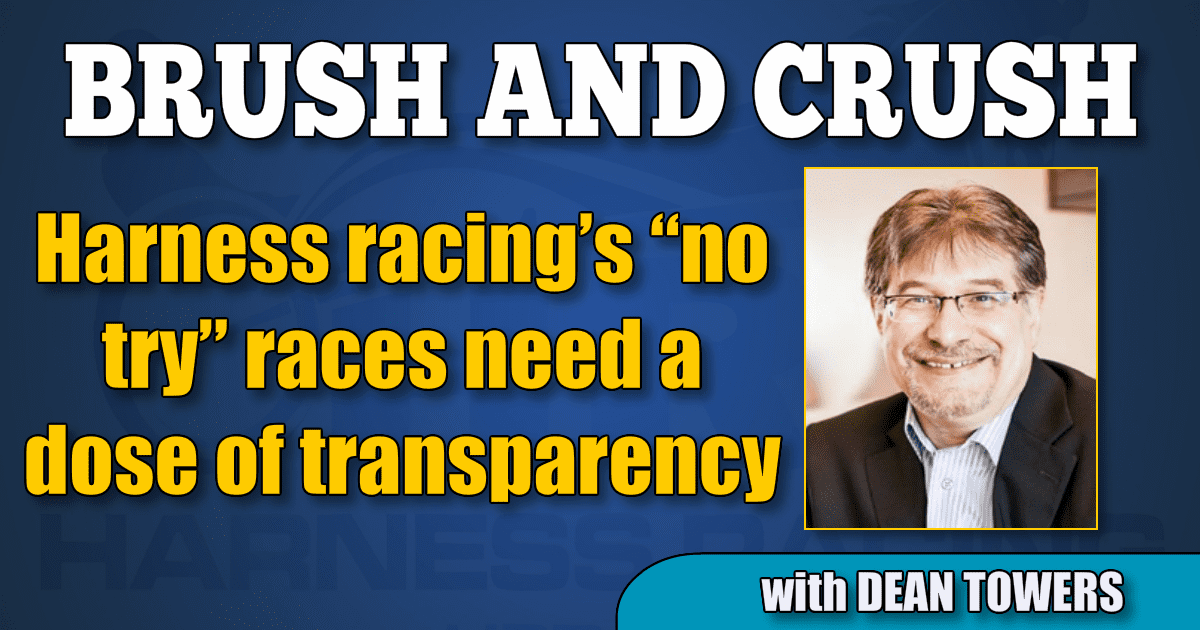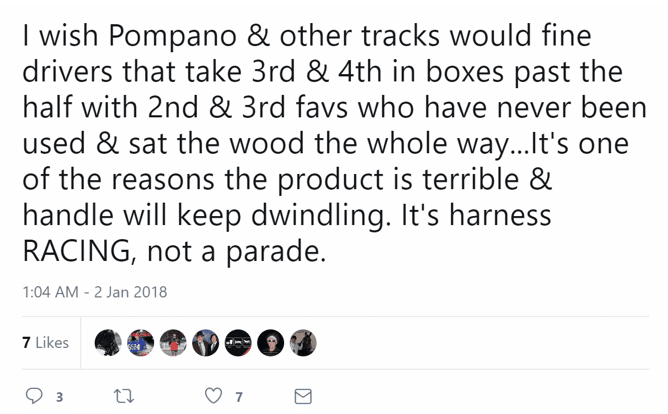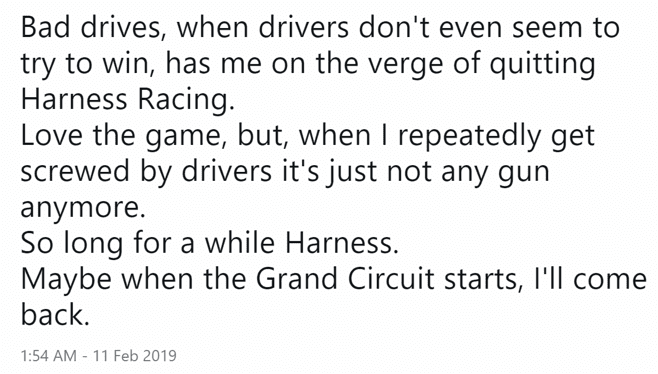Harness racing’s “no try” races need a dose of transparency
Judges’ notes and driver interviews can help stop the bleeding.
by Dean Towers
We’ve seen it more times than we can count. A fast horse is odds-on, but the driver fails to put the horse into the race, finishing a fast-flying fourth. Immediately after the race, in the grandstand or on social media, there’s a cacophony of criticism – some fair and some surely unfair – about the driver, trainer, and the entire sport of harness racing.
Meanwhile at the track, whether it be the backside, the judges’ room, or the announcing booth, there are crickets. Everyone knows what they just saw, but it’s like it never happened. This acts like gasoline on a July brush fire, because these already frustrated customers find they are yelling into a vacuum.
From people inside the industry whom I speak with from time to time, there seems to be little alarm about this practice; it’s just the way it is, and it’s not a big deal. In my view this is not reality, and comments I read from customers frequently illustrate it.
In our experience, we know some drivers won’t put forth an effort with well-bet chalk for a few reasons like these:
i) The horse had some terribly tough trips and the connections want to cover him up.
ii) The horse is not grabbing the track, or doesn’t feel very good and the driver believes the horse’s best chance to win is sitting or tripping out.
iii) It’s a bad post this week, and the trainer wants to wait for a better one.
The first two reasons are understandable; the third one much less so (and it’s probably worth another column). However, they are a part of racing horses, and have been forever.
My question is: Why are the powers in harness racing unable to admit as much, and why are they so afraid to put forth policy to make things better?
I think there’s something the sport can do.
I believe the easiest way to address this issue is through the judges. When a horse is 2-5 and is buried, it is incumbent upon those who officiate the races to ask the driver why, and let the public know. This is simply sound policy — it ensures nothing nefarious is going on, and if it’s done in a systematic way, bettors will have their questions answered.
This information could be placed in barn notes on the track website, or for the most progressive tracks, in the program. Unless the drive was particularly egregious, I don’t think fines are needed because the drivers will get the message. It just might make the races better.
Another way I believe no tries can be handled – and I fully realize drivers would not be a fan of this — is through driver interviews. Do you ever notice that at track after track we hear from the driver of the winner, but never the well-bet loser who raced terrible, or was buried in an odd drive? This should be easy enough to change. Via an after-race interview, the driver can be fully transparent – he or she can relay how the horse was not on the bit, was not grabbing the surface, or, in some cases, the driver can simply say “I screwed up”. Bettors might not like their answers, but some will, and it’s infinitely better than the silence they currently get.
For the very rare time something untoward did actually happen and “the fix was in,” the above policies will probably make drivers and connections think twice about doing it again. If you know you’ll be called up by the judges, or interviewed on camera, wouldn’t you?
In 2011, when Theo Epstein took over as general manager of the Chicago Cubs he said, “something as simple as transparency is really scalable because it quickly impacts the culture. And the culture is something everyone feels.”
Harness racing’s customers (and some participants, truth be told) are pleading for a culture change, and they want to feel that change. It can be achieved one policy at a time. Why not get started?



















